Click here for the index of the Nanasaba 1st Season Development Diary
Good evening! This is sou7. Yesterday, in Day 5 of the Nanasaba 1st Season Development Diary, I introduced the Makasa Main Line. Today, let’s turn our attention to the opposite direction and take a look at the Ryugu Main Line, which extends to the northeast.
Nanasaba National Railways Ryugu Main Line
The Ryugu Main Line starts at Masaba North Station in Masaba City, the capital located at the center of the map. From there, it heads northeast toward the Tokai Region, eventually reaching Ryugu Station in Ryugu City, the capital of Ryugu Prefecture.
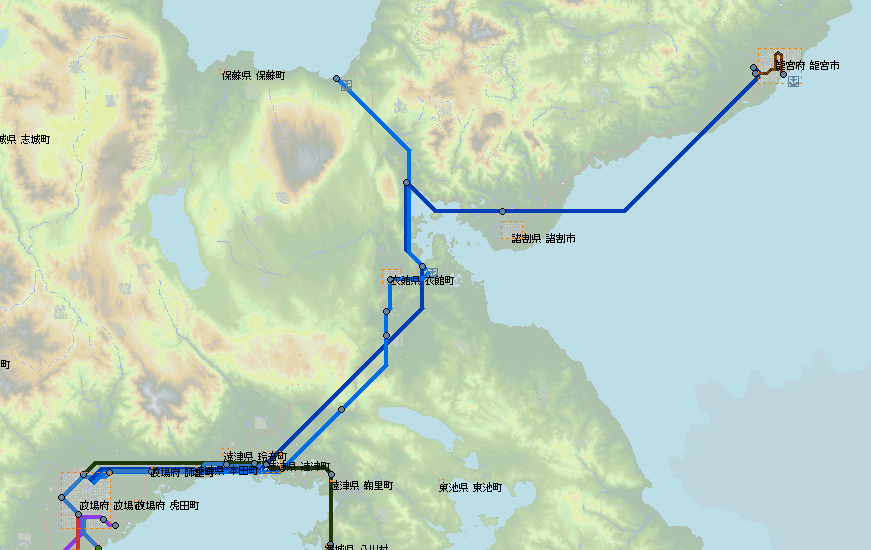
There are two main types of services on this line:
- The Express “Ryugujo”, which runs the entire route from Masaba North to Ryugu.
- Local trains, which operate only up to Koromodate Port.
Additionally, two other railway lines run through the Ryugu Main Line:
- The Totsu Line, which operates between Masaba Port, a massive new harbor south of Masaba, and Totsu Central Station in Totsu City.
- Trains from the Totsu Line run through the Ryugu Line, operating between Masaba North Station and Totsu-guchi Station, located on the western side of Totsu City.
- The Kenen Main Line, which extends southeast from Totsu to Kendari, in the Southeast Region.
- This line also shares tracks between Masaba North Station and Totsu-guchi Station.
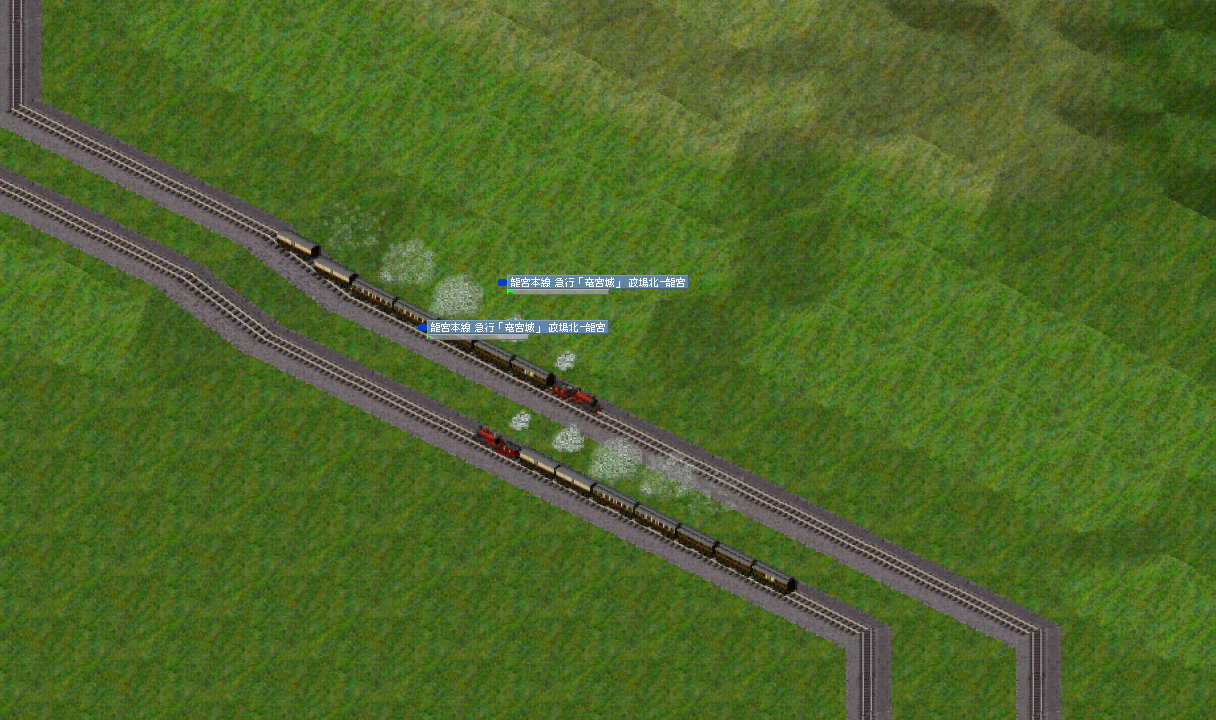
Here is the express train in action. Long formations are always a sight to behold!
Stations and Cities
Now, let’s explore the stations and cities along the route.
Masaba North Station
Masaba North Station is located on the northern edge of Masaba City. Unlike Masaba Station, which is centrally located, this station sits on the outskirts, allowing ample room for future expansion. Plans are already in place to quadruple-track the line.
The Suzaku Avenue Line of the Teito Rapid Transit Authority also stops here, providing frequent connections to Masaba City’s center.
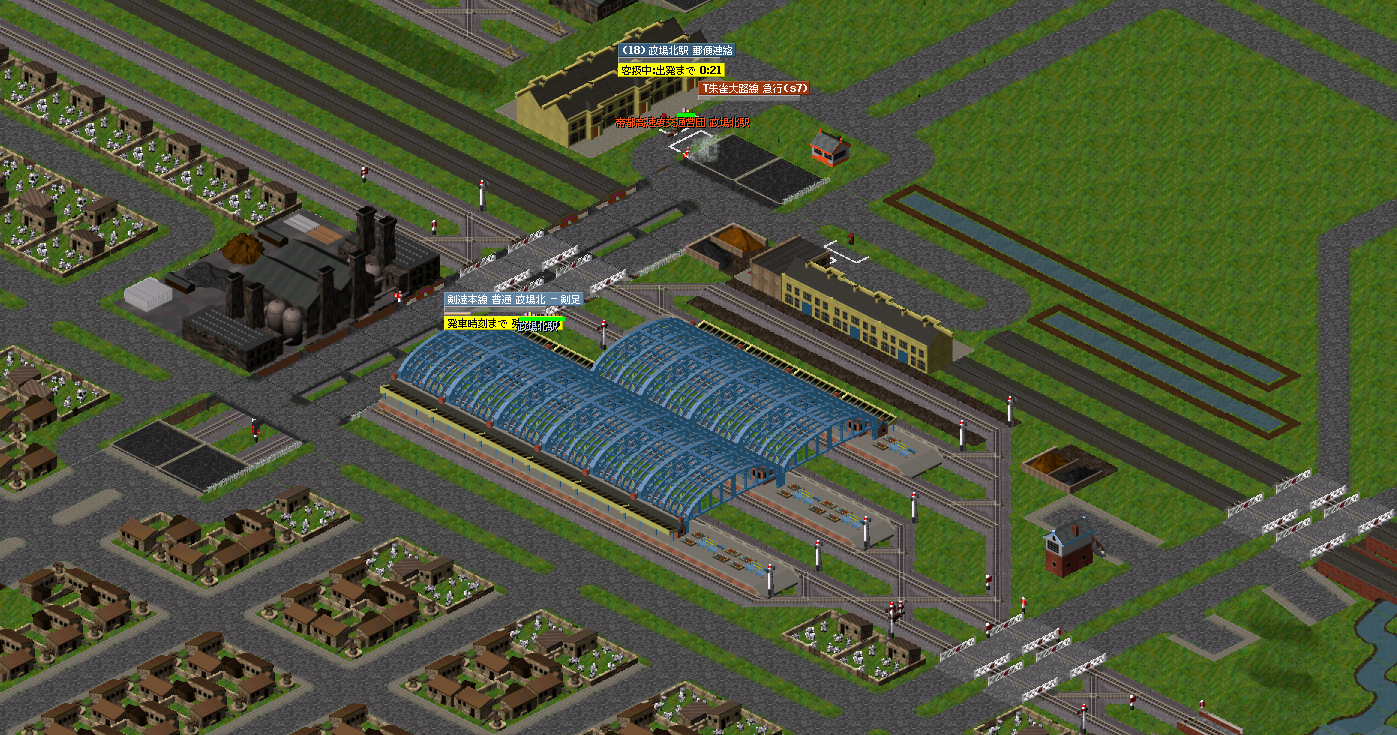
Totsu-guchi Station & Totsu Central Station
Totsu-guchi Station is located on the western outskirts of Totsu City. Due to the river separating the station from the main city, walking into town takes quite a bit of time.
At this station, a branch line heads southeast, while the Ryugu Line turns northeast.
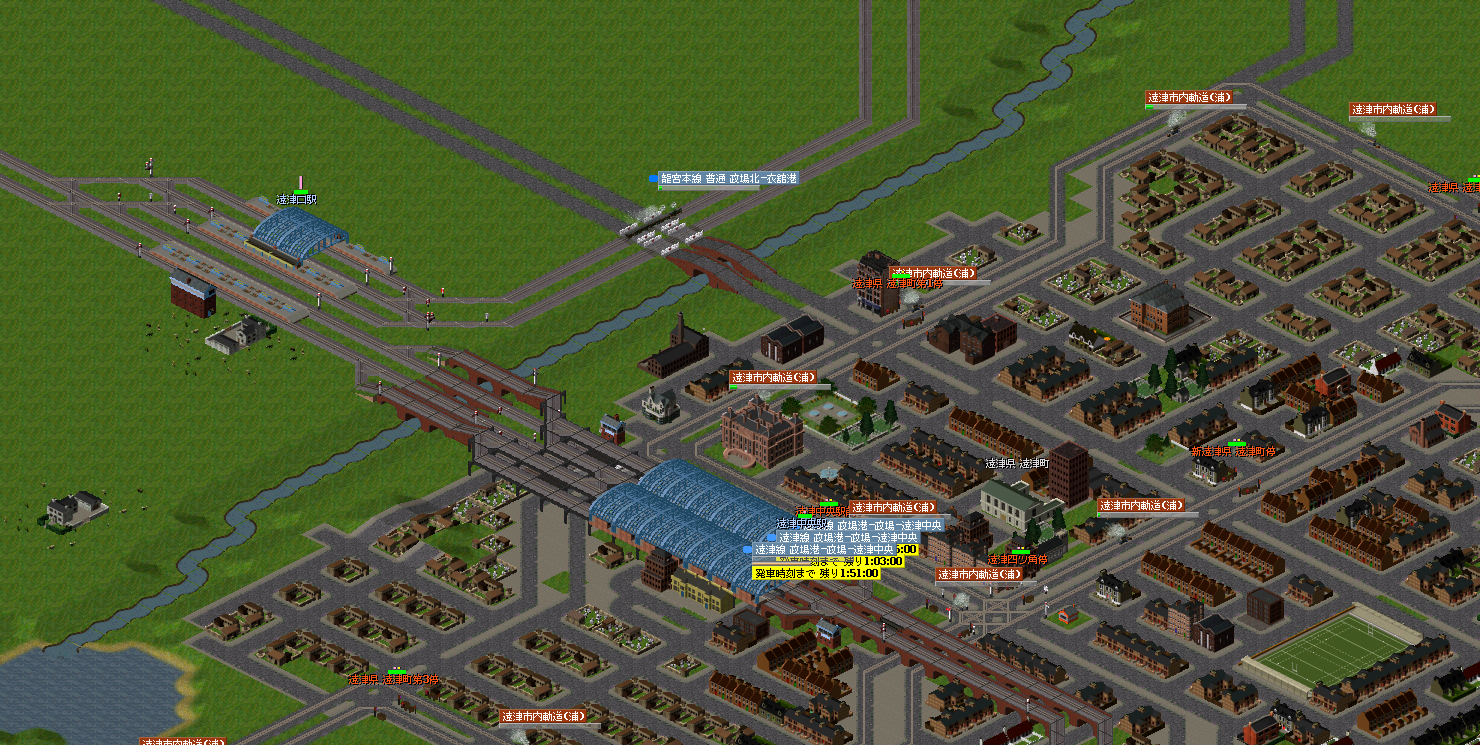
Further down this branch line is Totsu Central Station, one of the first stations to be built when the railway network was established (see Nanairo National Railways - East Main Line for more details). After the Ryugu Line was extended, Totsu Central Station became a stop exclusively for local services heading toward Masaba.
However, with the opening of the Kenen Line, a new elevated railway was constructed through the city, providing a direct connection to Kendari. As a result, Totsu Central Station is no longer a terminal station.
The Mountain Pass
To travel from Seinai Region to Tokai Region, trains must cross a mountain pass. Given the low power of steam locomotives in this era, selecting the optimal route was a significant challenge.
This section of the railway gradually gains altitude, leading to the tunnel at the summit. The planned double-tracking won’t simply add parallel tracks; instead, the up and down lines will be staggered vertically, following the natural slope.
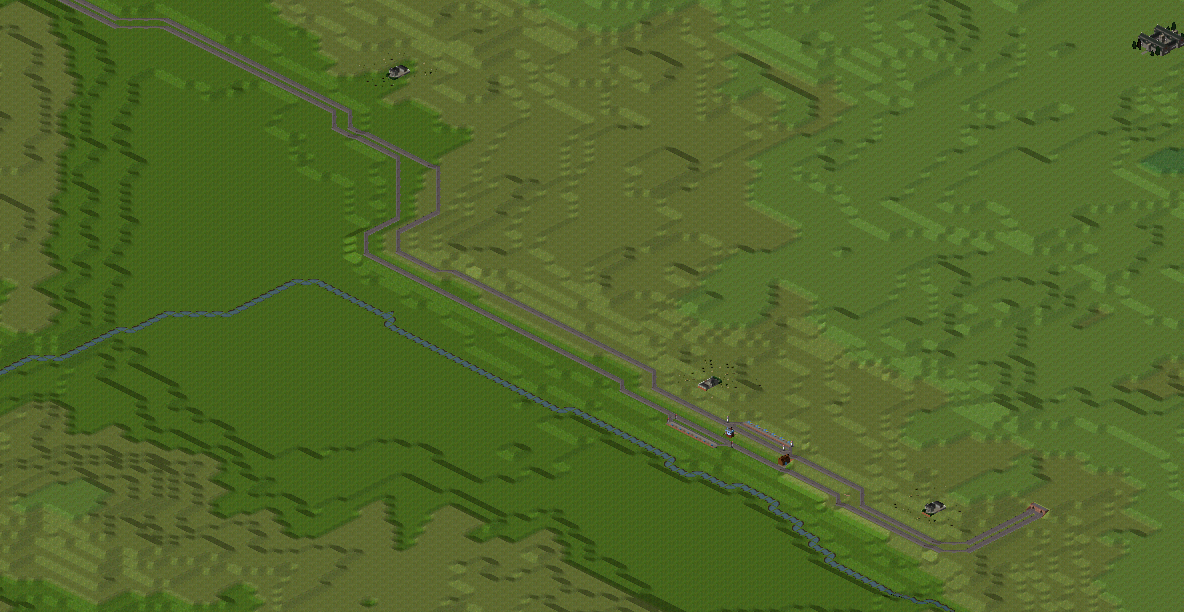
Once through the tunnel, the line descends sharply, navigating a series of tight curves along a rugged valley.
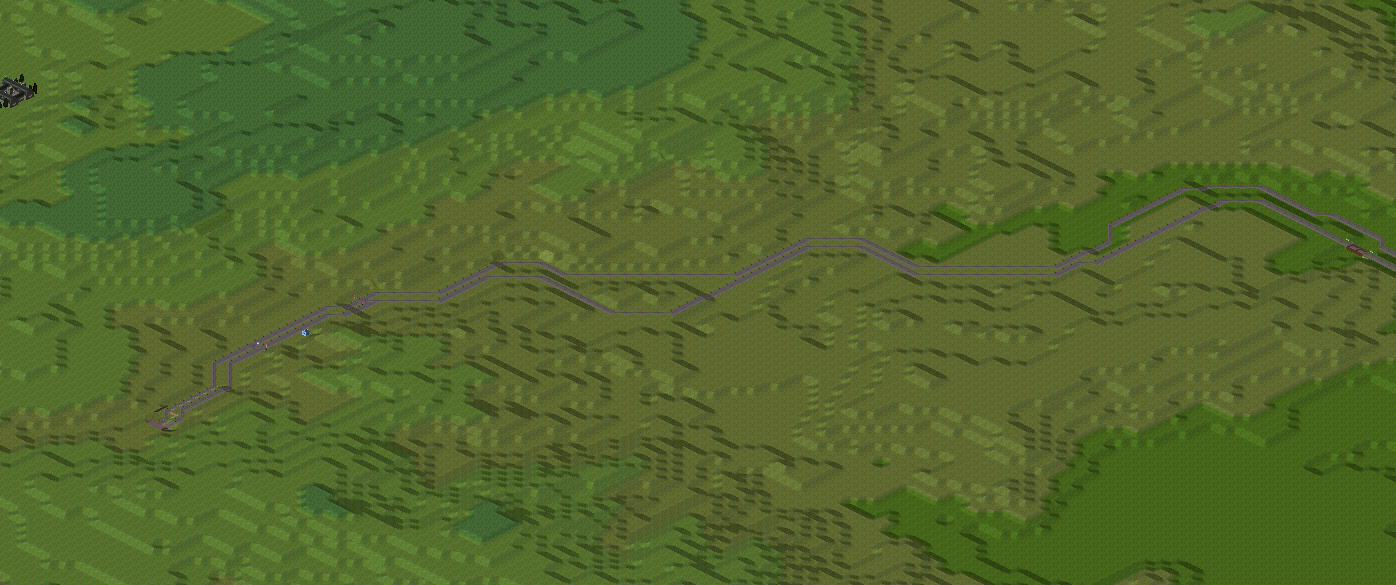
Koromodate Station & Koromodate Port
Local trains terminate at Koromodate Port, with only express trains continuing beyond this point.
Koromodate Port plays a crucial role in freight logistics. Resources such as coal, mined in Tokai, are first transported down the mountains to the port. Since freight trains are slow-moving, they tend to interfere with passenger services. To resolve this issue, ships are used to transport goods instead.
However, there is a problem: to deliver coal to Seinai Region, ships must take a long detour around a southern peninsula. To solve this, a direct freight rail line runs from Koromodate Port to Seinai City, ensuring efficient transport.
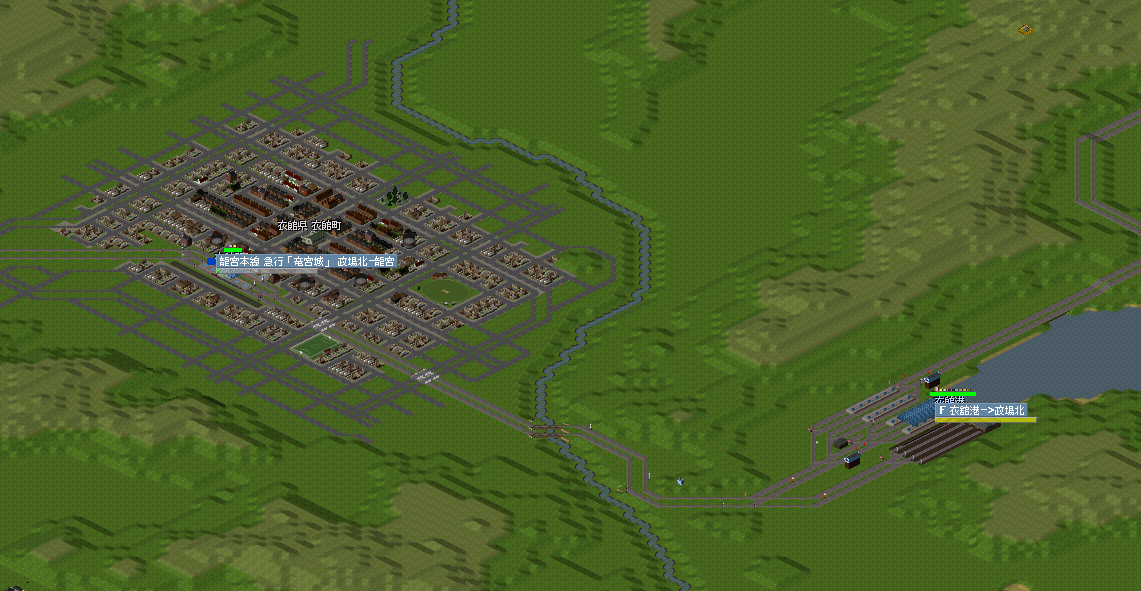
The Harsh Coastal Route
Beyond Koromodate Port, express trains continue toward Ryugu. This section of the railway is particularly dramatic, as steep cliffs extend right up to the coastline, forcing the tracks to thread through the narrow available land.
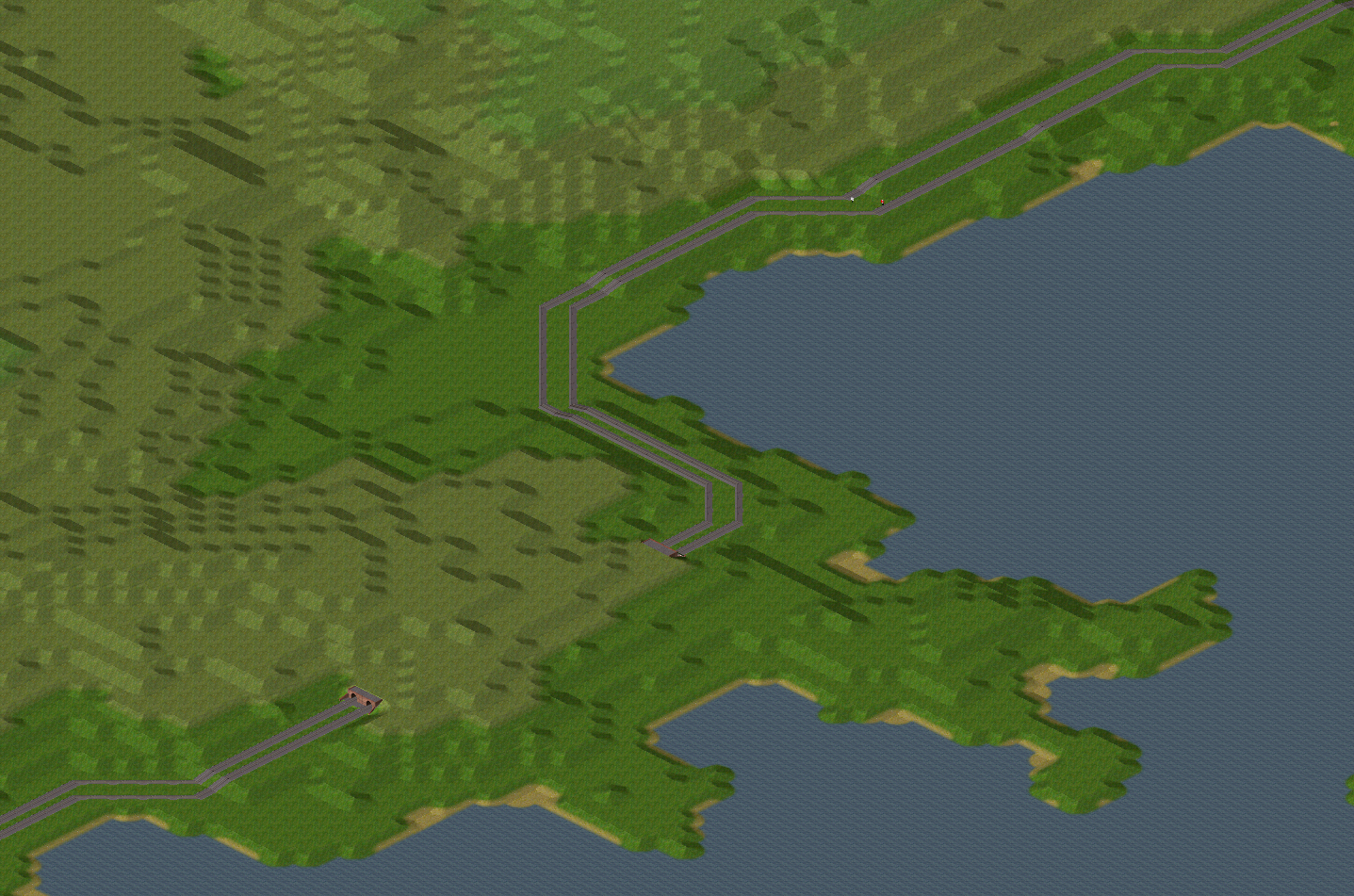
Hasebou Station
After traversing the rugged coast, the landscape briefly opens into a flat plain. Here, we find Hasebou Station, where a northbound railway line branches off. This branch is planned to extend to Minahasa Peninsula, ultimately forming a major north-south trunk line across the entire map.

Morowari City Station
Leaving the coastline behind, the train enters a vast open plain and arrives at Morowari City Station. The city is built along a large, winding river, with the main urban area nestled within one of its meanders.
When constructing the railway, engineers chose to bypass the winding river, which resulted in the station being located some distance from the city center.
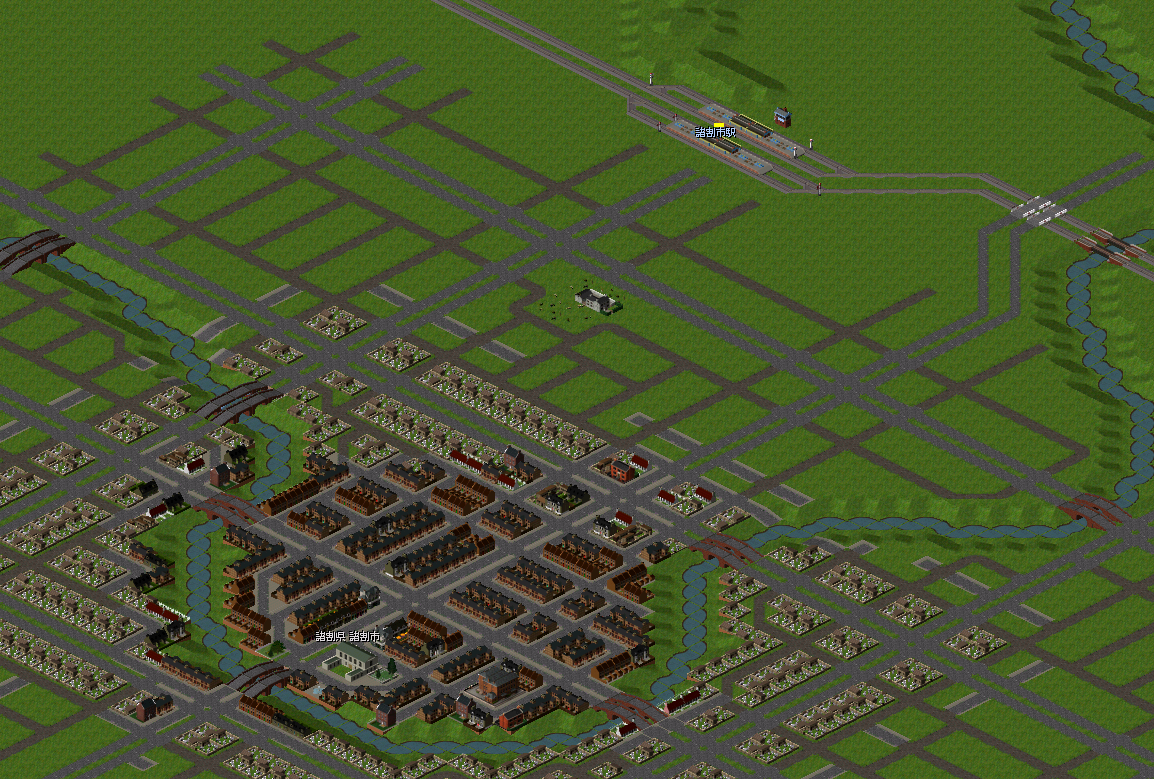
Ryugu Station
At last, we arrive at the final stop, Ryugu Station. This station is located on the western side of Ryugu City, with streetcars providing access to the city center.
Ryugu City is home to Ryugujo, a castle that serves as the city’s iconic landmark. The name “Ryugujo” is inspired by a legendary underwater palace from Japanese folklore, famously featured in the tale of Urashima Taro.
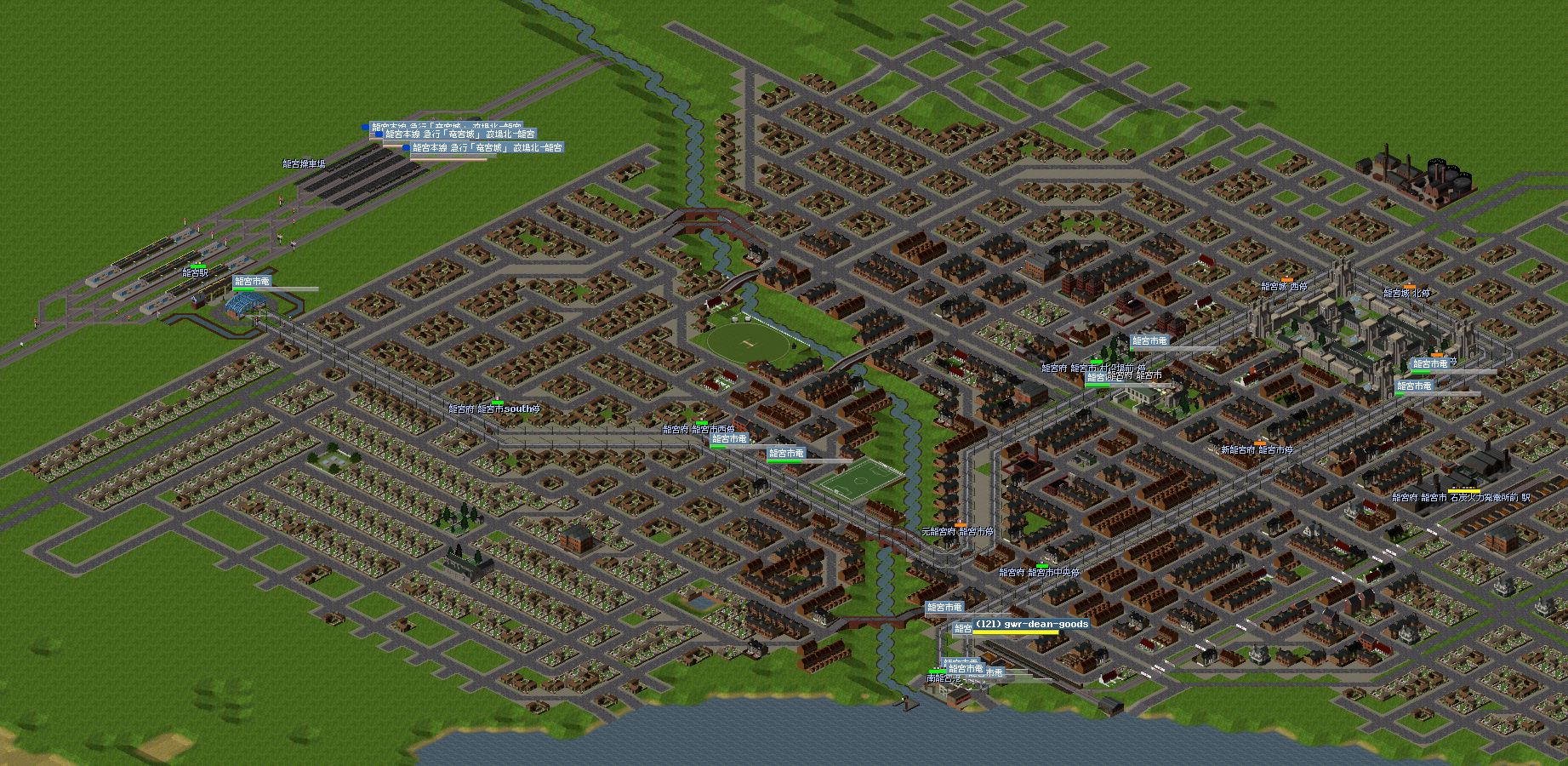
Perhaps I was really in the zone today—this development report ended up longer than usual! Tomorrow, I’ll take a break from covering major railway lines and instead focus on Masaba City in more detail.
See you next time in Day 7 of the Nanasaba 1st Season Development Diary!